Here’s the church, here’s the steeple, open the doors, and here’s a new Going Inside post.
If you’ve been to Natchez, I’m sure you’ve noticed the grand Gothic Revival St. Mary’s Cathedral–eh-hem, excuse me, St. Mary’s Minor Basilica–right downtown with its steeple towering so high that unless you have a super-fancy camera, you can’t ever get the whole building from top to bottom in the picture. The building was begun in 1842 but not completed on the interior until 1886. Let’s go inside.
The minor basilica has a wonderfully concise but detailed history on its website–I wish all churches had such good information readily available for curious people! Here’s what they have to say about the congregation’s history and its beautiful church building:
The Diocese of Natchez—the first diocese in Mississippi—was established in 1837. Two years later in 1841 Bishop John J. Chanche arrived as first bishop. Not long after his arrival, Bishop Chanche set about building a cathedral, the cornerstone of which was laid in 1842. The not-yet-finished Gothic Revival Cathedral—named Our Lady of Sorrows—was dedicated on December 25, 1843, but took 40 years to complete. Then on September 19, 1886, it was consecrated and remained the Cathedral of the Natchez Diocese until 1977.
Twelve of the sixteen stained-glass windows, designed by Tyroler Glassmalerie of Innsbruch, Austria, were installed from 1884 to 1893. The remaining four were designed by Emil Frei of St. Louis, Missouri, and were installed in 1961.
There are three marble altars, communion rail, Episcopal chair, and screens, made of Carrara marble that were fashioned in Italy in Gothic style for St. Mary. The two side altars were installed in 1903 and the main altar was installed in 1930. A new oak altar of celebration and pulpit were installed in 1991.
Go Inside even more!
Categories: Architectural Research, Churches, Natchez















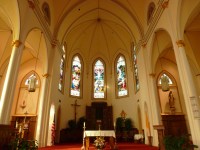
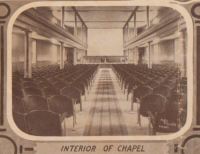
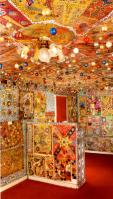
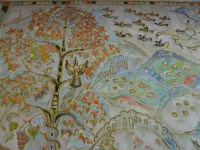
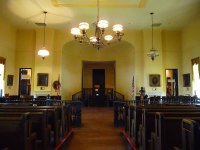
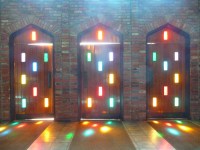
Very beautiful!
LikeLike
An architectural work of art! Breathtakingly beautiful.
LikeLike
Magnificent …..
LikeLike
One afternoon when in Natchez I wandered over to the church. I tried the door and finding it open wandered in. I was so struck by the beauty of the sanctuary that I couldn’t make myself go more that a step or two inside. It was breathtaking – I just stood there taking it all in! Thank you for sharing the history.
LikeLike
thanks for the look inside st mary’s minor basilica, natchez(as well as the links to other ‘inside views’). st mary’s is one of mississippi’s finest surviving buildings of any type or era, and, when religious structures across the country–yes, even here in upstate ny–are being re-purposed, demolished, or allowed to deteriorate, it’s a credit to the catholic diocese of mississippi–and other non-catholics–that st mary’s is both cared-for and used as originally intended.
i write today because 5 february is the anniversary of the birth of st mary’s baltimore-born architect, robert carey long, jr(1810-1849), known as ‘r carey’ to distinguish him from his father, robert carey long, sr(ca 1770-1833), also a fine architect. sadly, neither gentleman is well known outside of maryland, and, because jr died prematurely, his flourishing career was cut short all too soon.
there is quite a bit of information on both longs in published sources–books, articles—and on the internet. http://www.stmarybasilicaarchives.org repeats the fine mini-biography of long jr(with a portrait) which originally appeared on the website of the baltimore architecture foundation; it was authored by my longtime friend, james t wollan, jr, aia, who also created a simliar article on the same website for long, sr. (and, yes, st mary’s church is mentioned in the former.)
the early 1840s st alphonsus r c church still standing in downtown baltimore, by long, jr, created a popular form for mid/late 19th century american catholic churches, and while the it is larger and grander than st mary’s, a relationship is easily apparent. long, jr’s connection to natchez was through mississippi’s first bishop, fr john chanche, a marylander.
the 1840s gothic revival st peter’s r c church once in vicksburg(demolished in 1953 due to unfortunate tornado damage) is reminiscent of st alphonsus, too, but VERY SIMILAR to st mary’s. obviously, there is a ‘spiritual’ connection between the two parishes(and, rivalry????), but, might there be a ‘designer relationship’ because long, jr also provided the vicksburg building’s drawings? or, is the similarity due to a local builder/contractor reusing long’s ideas, maybe even james hardie, of natchez, who worked on st mary’s?
my research facilities here in upstate ny are limited, and i don’t have any of the recent books on mississippi’s churches, extant and/or demolished. but, perhaps someone in our group knows the pertinent answers. from old photos, it appears that st mary’s and st peter’s differed significantly at their respective altar ends, but, what about the interiors? do interior photos of st peter’s exist?
if would be wonderful to ‘find’ another long, jr building on his birth anniversary, and, to ‘discover’ one in mississippi would be special for me–and, for my friend jim wollan, in maryland, too.
LikeLiked by 1 person
Ed, read my short write-up about St. Mary’s Basilica from our 101 Mississippi Places To See Before You Die list. Although not very long or detailed, it is accurate as to what was known about the church’s construction history six years ago. I do not believe any new information has been discovered that renders it out-of-date.
LikeLike
hi, mr white–yes, of course i was familiar with your concise write up about ‘recent knowledge’ of st mary’s before i wrote my comment. i did want to correct your mention of the architect’s name, however–you wrote ‘robert carey long’ without either ‘sr’ or ‘jr’ -and it’s ‘robert carey long, jr’. and, i am certainly curious about any architectural connections to the gothic revival st peter’s r c church in vicksburg— and interior views of it. i suspect you have some of the recent books on ms churches which might have pertinent data. oh, and, i wonder if historic natchez foundation discovered the long, jr connection to st mary’s first or if that data came from the baltimore architecture foundation– do you know? (can’t seem to find a date for the wollan bio sketch, but, course, can ask him.)
LikeLike
Is there any record of the enslaved artisans or laborers who helped to build the Basilica?
LikeLike
i suspected that our w white would have answers to some of the questions i proposed in both of my previous emails, and i was correct.
in some private correspondence yesterday and today, he kindly corrected me in a major error— i called st paul’s rc church, vicksburg, st peter’s! 1000 pardons, everyone, please! and, i will blame this on 1)the cold weather up here, and 2)my haste to get the comment posted on long, jr’s birth anniversary last monday–it had been a weekend of strenuous literary activity–yes, this can happen to a writer–and paul became peter when i put pen to paper in the online draft even though my notes are correct!
mr white was also kind enough to give me some data from richard cawthon’s ‘lost churches of mississippi'(2010) which mentions st paul’s. courtesy of james t wollon, aia, havre de grace, md–author of the mini bios of both long, sr and long, jr for the baltimore architecture foundation(which i cited previously)–cawthon states that both st mary’s and st paul’s are by long, jr, but with different contractors. cawthon doesn’t go into details of the architectural differences between the structures, and, while he shows exterior views of st paul’s, he doesn’t comment on the interior of the latter, nor(sadly) does he show any interior views. (and, i’ll ask again–does anyone in our group know it they exist?)
i have neglected to mention the very handsome st paul’s rectory(to the left of the front facade of the church), which can be seen in old photos. it was a very fine two-story gothic revival 5 bay structure, over a tall basement. domestic buildings in this style weren’t common in ante-bellum mississippi, and i could find out very little about it on the net– other than the fact that some of the materials were pre-fabricated in cincinnati—not uncommon for lower mississippi valley structures in all styles. according to mdah files, it was demolished in 1972, so i would have seen it in visits to vburg in the 1950s, 60s, and early 70s. of course, one wonders the architect of this building and its date—1850s (?) for the latter, ? for the former?
so, we seem to have(at least) two long, jr buildings in mississippi, which is nice to know. and, take a look at his portrait on the st mary’s website—a rather striking gentleman!
LikeLiked by 1 person
A lot of people miss out on seeing the pipe organs . Walk down half way inside the church and turn around and look up in the balcony. Unbelievable site.
LikeLiked by 1 person